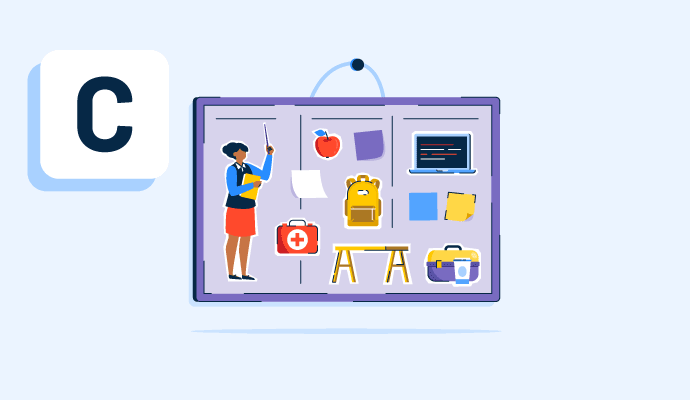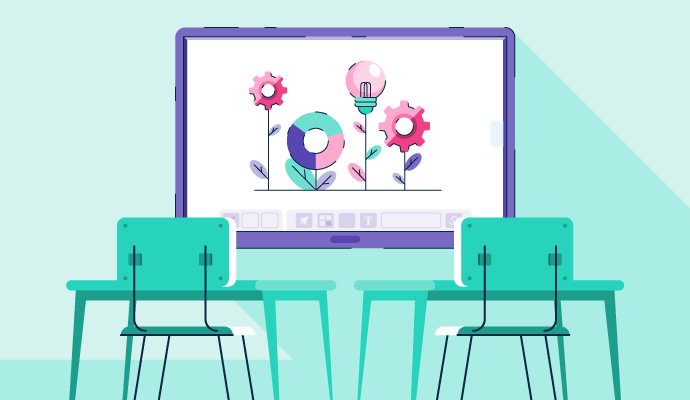What is classroom management?
Classroom management is a teacher's collection of skills and techniques for creating a productive and orderly learning environment. By defining clear routines, procedures, and expectations, students feel safe and can learn.
Classroom management approaches vary widely depending on the grade, the characteristics of the students, and the teacher’s personality and experience. No matter the method, developing a classroom management plan ahead of time and following through consistently typically yields the most success.
Classroom management software lets teachers track students’ behavior, provide positive feedback, and communicate with caregivers. These platforms can also encourage on-task behavior and engagement during assessments and provide digital collaboration opportunities.
Basic elements of classroom management
Classroom management encompasses various organizational and communication skills alongside instructional techniques. Some of the essential elements that teachers need to consider for strong classroom management include:
- Classroom layout and seating. The basic set-up of a classroom, such as the placement of the tables and chairs, can facilitate or hinder discussion and movement. Once the teacher establishes the basic classroom layout, they must consider where students will sit. Some students perform better near friends; others need to be close to the front of the room, for instance.
- Instructional techniques. Certain instructional techniques encourage participation and engagement, reducing off-task behaviors and improving achievement. These techniques vary by grade, content, and individual learning preferences.
- Communication. Instructors must let students know what is expected of them for behavior and learning. Teachers can use active communication, like speaking, writing, or gesturing, or passive communication, like posted learning targets and diagrams.
- Expectations. Students can’t hit a target if they don’t know what it is. Part of classroom management is setting expectations and clear consequences if students don’t meet those expectations.
- Communication of expectations. Instructors must let students know their expectations for behavior and learning and the consequences of not following expectations. Teachers can use active communication, like speaking and gesturing, or passive communication, like posted rules and diagrams.
- Routines and procedures. Structure keeps a classroom running smoothly. They minimize disruptions and help students maintain focus.
- Organization. Students who can’t locate classroom supplies quickly may get off task and abandon their assignments. Arranging classroom essentials prevents the loss of instructional time and behavioral disruptions.
Classroom management styles
Teachers tend to adopt different classroom management styles based on their personality traits, training programs, and experience. Most approaches fall into four distinct categories.
- Authoritarian is the most top-down, rigid style of classroom management. Students typically sit quietly without the flexibility to participate actively or the freedom of movement. In authoritarian classrooms, students may experience some sense of fear of punishment, so they may feel less safe exploring new ideas or ways of learning.
- Authoritative is often considered the gold standard of classroom management. Authoritative classroom managers invite student involvement while maintaining structure. The teacher values student ideas, and students feel safe contributing to class discussions and taking risks in their learning. This classroom management style is often associated with the best social, academic, and behavioral outcomes.
- Permissive classrooms are when the teachers have less control and rely on a hands-off approach to teaching. Without rules, procedures, or expectations, students behave how they wish and often opt out of completing their work. As a result, the class environment doesn’t promote learning or achievement and can be emotionally stressful for both the teacher and students.
- Indulgent emphasizes empowering students to make their own choices. Indulgent teachers care about their students and want them to succeed, but struggle to maintain classroom management because they’re too attached to pleasing students. These teachers are often well-liked because they give students freedom and choices, like open seating or unlimited project extensions. Still, the lack of boundaries creates an unproductive learning environment.
Classroom management best practices
Creating a classroom that runs smoothly takes clarity and consistency. To foster a safe atmosphere and promote learning, teachers should:
- Set clear expectations. Teachers need to come up with three to five clear expectations for behavior. They should frame these expectations with positive language, such as “Come prepared to learn!” instead of “Don’t forget your notebook.” Then, they must communicate these expectations with students and their caregivers.
- Practice routines and procedures. Students have to understand daily routines, like how to enter the class and start their warm-up or bell work assignments. They also need to know classroom procedures for basic occurrences, like sharpening their pencils or leaving the classroom to go to the water fountain. Once introduced, the teacher should provide opportunities for students to practice.
- Build positive relationships. Student behavior is better in classrooms where teachers try to get to know their students. By finding out more about students’ hobbies and personalities, teachers can build genuine connections that make students feel valued and encourage respect.
- Provide specific praise. Teachers should look for ways to provide positive feedback to shape students’ behavior. With comments like, “I like how you raised your hand before talking,” a teacher encourages the student to continue to behave that way in the future.
Learn more about classroom management strategies to create an effective and efficient learning environment.

Kelly Fiorini
Kelly Fiorini is a freelance writer for G2. After ten years as a teacher, Kelly now creates content for mostly B2B SaaS clients. In her free time, she’s usually reading, spilling coffee, walking her dogs, and trying to keep her plants alive. Kelly received her Bachelor of Arts in English from the University of Notre Dame and her Master of Arts in Teaching from the University of Louisville.





















